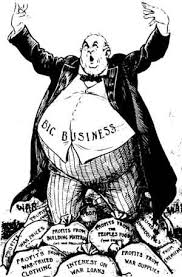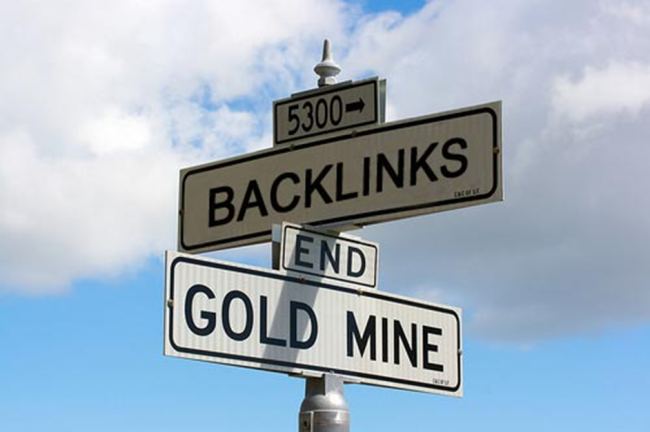90% Of Customers Will Recommend Brands After Social Media Interactions
Tags: A new study conducted by the Internet Advertising Bureau has found that 90 per cent of consumers would recommend a brand to others after interacting with them on social media.
A new study conducted by the Internet Advertising Bureau has found that 90 per cent of consumers would recommend a brand to others after interacting with them on social media.
The study focused on FMCG brands Heinz, Kettle and Twinings and found that social media can drive by driving brand sentiment, encouraging consumer engagement and increasing brand loyalty.
More than 4,500 survey responses were collected from each brands social media pages over a two month period and supplemented by 800 interviews to inform the findings.
This showed that four out of five consumers would be more inclined to buy a brand more after being exposed to their social media, with 83 per cent happy to trial the product in such circumstances.
The uplift in sentiment for each brand was measured as Heinz 22%, Kettle 17% and Twinings 19 per cent, allowing the IAB to estimate that for every £1 spent on social media as much as £3.34 could be generated.
Kristin Brewe, the IAB’s director of marketing & communications said: “The IAB study shows that, when trying to create deeper emotional connections with consumers, social media is an essential channel for brands. This isn’t surprising since social media is the only channel where it’s possible for brands and consumers to have meaningful two-way conversations, making the strength of connections that much stronger.â€
Ian Ralph, the director at marketing sciences who conducted the research, adds, “Our research shows that to create an emotional connection brands really need to provide clear, timely and, most important of all, relevant content that develop a conversation. Interestingly, we also found that brands really shouldn’t be afraid about having their products on show and of linking up their social media activities to their business objectives. Social media has the potential to turn brand customers into brand fans.
“By making people love, not just like your brand, you’re more likely to drive future purchases and increase sales.â€
 By JOHN GLENDAY, THE DRUM
http://dealernetservicesonline.biz
Â
Sponsorship May Be Hard to Define, but Marketers Still Invest
Tags:Social sharing is key to online sponsorship
Sponsorship regularly extends beyond digital channels to the entire marketing ecosystem, according to a new eMarketer report, “Online Sponsorship: Defining, Tracking and Measuring an Amorphous Channel.â€Â So for many marketers, sponsorship is a multichannel game, where the activity in one channel supports and leads to another.
Sponsorship can be difficult to define with a single label. It can mean logo placements, banners and pre-roll video ads—or it can mean streaming concerts, brand-created articles, along with sponsored events and webinars.
The prevalence of sponsorship marketing is huge. In a February 2012 study from the Columbia Business School and New York American Marketing Association (NYAMA), 90% of US marketers said they included sponsorships and events as one of their marketing tactics.
According to research from GroupM, sponsorship spending, at $19.2 billion, will comprise 14% of total marketing spending in North America in 2013.
IEG, a sponsorship consultant, came in roughly in line with GroupM, estimating that North American sponsorship spending this year will be about $19.9 billion. Most of those sponsorship dollars will go to sports, at a 69% share of that market. In contrast, entertainment sponsorship will represent only a 10% share.

Social has become a key element of sponsorship. “We can’t do a partnership right now without someone asking for some sort of social extension,†said Dan Rossomondo, senior vice president of global marketing partnerships for the National Basketball Association. According to IEG and Performance Research, 88% of companies worldwide used social media as a channel for leveraging sponsorships in March 2013.

Digital interactivity works as an excellent support for a brand’s more static sponsorship methods offline. Therefore, digital sponsorship increasingly depends on cross-channel elements.
“What used to be clearly identified as sponsorships, with discrete budgets and contracts, are now far more likely to be part of multiplatform, cross-channel programs in which a partnership is just one element, and where multiple players have a role in planning, execution and evaluation,†IEG’s “Sponsorship Outlook†reported in January 2013.
Just as some of sponsorship’s formats and several of its elements are evolving, so are the ways in which marketers measure its effectiveness—but to a lesser extent.
In the IEG/Performance Research survey, the most cited metrics for evaluating sponsorships were sponsorship awareness (94%) and brand awareness (90%).

However, a UK study from Think!Sponsorship found that nearly everyone (93.5%) said that the information they need to evaluate sponsorship evolves over the course of any campaign. In addition, 70.9% of respondents said the sponsorship industry has become over-dependent on measuring brand awareness.
“I had all the wrong metrics before,†said Ron Faris, head of brand marketing at Virgin Mobile. “And the metrics before were impressions served. And all that stuff is just crap. The metric that I’m married to right now is all about the share. I also think the number of retweets and earned impressions are also really important. But I’m not going to bank on a lot of clickthroughs of views of my content.â€
The social metrics—shares and followers—tell Faris how often he can message the people he’s retargeted and how big he can make that retargeting pool.
The full report, “Online Sponsorship: Defining, Tracking and Measuring an Amorphous Channel,†also answers these key questions:Â
- What types of sponsorship are available to companies today?
- How do sponsorship spending estimates help describe this universe?
- What elements contribute to the evolution of sponsorship?
- What are the best ways to measure sponsorship’s results?
Â
This report is available to eMarketer corporate subscription clients only. eMarketer clients, log in and view the report now.
-
Must Reads are :
compendiums of our best recent coverage of a particular topic. In this issue,
find out how hackers try to trick your employees, why it takes so long to
findbreaches, how the cloud can help SMBs find vulnerabilities -- and much
more. - How Hackers Fool Your Employees
-
Why Are We So Slow To Detect Data
Breaches?
New OWASP Top 10 Reflects Unchanged State Of Web Security
Cloud Can Simplify Vulnerability
Management For SMBs
Don't Take Vulnerability Counts At Face Value
Negligence, Glitches Push Breach Costs Up Worldwide
Follow This Link to http://dc.tw.ubm-us.com/i/142620Â Dark Reads
Â
 First of all, let me preface this by saying that it seems to me that the vAutos, Autotraders and True cars of the world are trying to commoditize the automotive industry. This may work well for the corporate owned multi-franchise companies but for the rest……
First of all, let me preface this by saying that it seems to me that the vAutos, Autotraders and True cars of the world are trying to commoditize the automotive industry. This may work well for the corporate owned multi-franchise companies but for the rest……Advances in technology are giving dealers the tools to directly market through their own websites, Social media, etc. and within their geographic area to increase floor traffic at their location. Once there they must have the confidence in their sales force to get the job done.
A good sales management team knows their market and has the tools in house to know what is selling for them and how to effectively control their inventory. My question is why are dealers paying big money to let companies come in and tell them how much to sell and/or buy their vehicles for and what vehicles to buy to increase sales. What are you paying management for? One day I overheard a rep from Autotrader tell the preowned manager that he needed to lower his prices to get better results.
That preowned manager bucked the trend of lowering prices to compete online. - And guess what- average grosses in his department were much higher than the average and his total unit sales were improving. Number one that is why you have a “good†sales staff and “good†finance people for and number two you can always come down in price but I never heard a customer say a price was too low.
Dealers should work with a marketing company who is going to help them drive traffic and not try to run their company. The bulk of dealerships sales are still made within their geographic area and that is where they should be focusing.
Author Bill Cosgrove
http://dealernetonlineservices.biz
Â
Closed Loop Analytics Can Improve Your Automotive Marketing
Tags: One of the most important elements of any marketing plan is the ability to track the effectiveness of new initiatives. Â
One of the most important elements of any marketing plan is the ability to track the effectiveness of new initiatives.  The ability to compare conversions prior to and following changes in an email or direct mail campaign can indicate whether you are receiving an adequate return on your marketing investment. One of the most valuable methods for determining ROI is closed loop analytics, which provides key metrics of marketing initiatives.Â
In most inbound marketing strategies, analytics play a critical role. However in an email or direct mail campaign, automotive closed loop analytics can provide insights that can springboard your marketing to new levels of success. Â
The metrics of automotive closed loop analytics can measure a variety of results including website visits, showroom visits and purchases.  Depending on the granularity of your metrics, you may also be able to determine specific characteristics of these interactions like age group, income, or level of enthusiasm.Â
Comparing the results from before and after an email or direct mail campaign can help you identify the most important components of your new initiatives and expand them, including:
-
Long-term results—Automotive closed loop analytics can provide
 results throughout the lifetime of your company. Once you have
implemented an analytics system that integrates your email or direct mail
campaigns with your CRM system, you can
continuously receive insights. As your needs or objectives evolve, you
 can modify the resolution of your analytics to help identify the most lucrative
 consumer markets. -
Agile system—Most closed loop systems are easily modified to allowÂ
virtually immediate results from an email campaign. If you would like to
know how many people clicked on a Call-to-Action (CTA) in the latest batch of
emails, then you only need to click a button. This type of responsiveness
may require additional investment up front, but the data available can help
make your dealership a success for years to come. -
Identify key marketing ideas—One of the most elusive objectives in
 any marketing strategy is identifying the marketing message that is most
 effective. Automotive closed loop analytics can instantly identify those
 components and help you understand why they are so successful. For
example you may find lifetime service options are a key to maintaining customer
 relationships which bolster sales. -
Unique metrics—Measuring ROI on direct mail has been difficult in the
 past, but with the use of new techniques like showroom controls or dedicated
 phone lines, you can accurately measure how effective your new initiative
is.  Using a phone number exclusively for direct mail responses and
coupons with RFIDÂ tags can indicate the precise number of reactions with a
relatively low cost.
Inbound marketing strategies are designed to coax consumers who are already interested in purchasing a car find your business and make a purchase.  With the aid of automotive closed loop analytics, you can refine your marketing strategy to identify those consumers who are most likely to lead to a sale. Â
If you would like some more tips on how to integrate automotive closed loop analytics into your email and direct mail initiatives, download our Automotive Marketing eBook:
If you would like some more tips on how to integrate automotive closed loop analytics into your email and direct mail initiatives, download our Automotive Marketing eBook:Â
http://info.palmeradagency.com/get-more-car-buyers?hsCtaTracking=890b950d-728f-49b4-8203-bf891fa354c9%7C0a330377-b367-4e68-86bb-b1c733f5e9fc
http://dealernetservicesonline.biz
Closed Loop Analytics Can Improve Your Automotive Marketing
Tags:The ability to compare conversions prior to and following changes in an email or direct mail campaign can indicate whether you are receiving an adequate return on your marketing investment. One of the most valuable methods for determining ROI is closed loop analytics, which provides key metrics of marketing initiatives.Â
In most inbound marketing strategies, analytics play a critical role. However in an email or direct mail campaign, automotive closed loop analytics can provide insights that can springboard your marketing to new levels of success. Â
The metrics of automotive closed loop analytics can measure a variety of results including website visits, showroom visits and purchases.  Depending on the granularity of your metrics, you may also be able to determine specific characteristics of these interactions like age group, income, or level of enthusiasm.Â
Comparing the results from before and after an email or direct mail campaign can help you identify the most important components of your new initiatives and expand them, including:
-
Long-term results—Automotive closed loop analytics can provide
 results throughout the lifetime of your company. Once you have
implemented an analytics system that integrates your email or direct mail
campaigns with your CRM system, you can
continuously receive insights. As your needs or objectives evolve, you
 can modify the resolution of your analytics to help identify the most lucrative
 consumer markets. -
Agile system—Most closed loop systems are easily modified to allowÂ
virtually immediate results from an email campaign. If you would like to
know how many people clicked on a Call-to-Action (CTA) in the latest batch of
emails, then you only need to click a button. This type of responsiveness
may require additional investment up front, but the data available can help
make your dealership a success for years to come. -
Identify key marketing ideas—One of the most elusive objectives in
 any marketing strategy is identifying the marketing message that is most
 effective. Automotive closed loop analytics can instantly identify those
 components and help you understand why they are so successful. For
example you may find lifetime service options are a key to maintaining customer
 relationships which bolster sales. -
Unique metrics—Measuring ROI on direct mail has been difficult in the
 past, but with the use of new techniques like showroom controls or dedicated
 phone lines, you can accurately measure how effective your new initiative
is.  Using a phone number exclusively for direct mail responses and
coupons with RFIDÂ tags can indicate the precise number of reactions with a
relatively low cost.
Inbound marketing strategies are designed to coax consumers who are already interested in purchasing a car find your business and make a purchase.  With the aid of automotive closed loop analytics, you can refine your marketing strategy to identify those consumers who are most likely to lead to a sale. Â
If you would like some more tips on how to integrate automotive closed loop analytics into your email and direct mail initiatives, download our Automotive Marketing eBook:
If you would like some more tips on how to integrate automotive closed loop analytics into your email and direct mail initiatives, download our Automotive Marketing eBook:Â
http://info.palmeradagency.com/get-more-car-buyers?hsCtaTracking=890b950d-728f-49b4-8203-bf891fa354c9%7C0a330377-b367-4e68-86bb-b1c733f5e9fc
http://dealernetservicesonline.biz

Google SEO SECRETS: you only need 9 back links
WATCH THIS VIDEO:
http://dealernetservicesonline.biz/3/post/2013/07/google-seo-secrets-you-only-need-9-back-links.html
Â
Â
Â
 Before smartphones and tablets ruled the world, SMS text ads or text messaging was what mobile advertising meant.
Before smartphones and tablets ruled the world, SMS text ads or text messaging was what mobile advertising meant.If used correctly SMS should be highly considered by marketers to boost sales.
1. Â One-to-one communication
Unlike mobile search or display across mobile web and applications, a text message is a dedicated piece of communication. Â Some would argue that it is better to reach users while in-app or surfing the mobile web as these people are in a state of engagement, but that could also be said of receiving a text message. Â The beauty of a text-based ad is that it is simple, direct and easy for someone to respond to. Â You are limited to 140 characters, but include a call-to-action via link or text back short-code. Â With any strategy, the data will speak for itself.
2. Â There are still non-smartphone users!
Yes, there are people that have not embraced all that mobile has to offer.  Don’t miss out on extending your reach or on the opportunity to engage with specific audiences that are slower to adopt.  Craft a strategy that may use SMS text ads to encourage other actions online, in-store or across social platforms, but always get the opt-in via short code text back.
3. Â A proven way to (re)engage with current customers
It’s smart to let the consumer choose how they interact with your brand.  If a current customer opts-in to receive your mobile text messages, take advantage.  All engagement funnels matter, whether a person subscribes to your email newsletters, likes you on Facebook, sign-ups for your mailing list, mobile texts communication is the perfect way to engage on the go.  Focus on both consistent and flash promotions.
Here is a great example from our friends at Digiday.
A Domino’s Pizza franchise in Charlotte, NC., wanted to get consumers to like it on Facebook, so it could push deals and offers out to fans.
The pizza chain had traditionally advertised the franchise’s Web address, which redirected to the Facebook group, on the big screen and other displays in the University of North Carolina’s basketball arena. The arena’s announcer read the advertisement while it was displayed. The spots typically lasted between 30 and 60 seconds. The problem with this approach, however, was that most students are not going to jot down a URL during a basketball game. While many students have smartphones, they were unlikely to spend a couple of minutes during a basketball game to visit the Facebook group. On the other hand, taking a couple of seconds to send and receive a text with the URL of the group makes sense. After the game ended, students could then review the text and visit the Facebook group on their smartphones or computers.
To kick things off, the pizza chain created a new ad for the arena displays, offering a free pizza to anyone who texted 49ER to 313131. They received the following response, “To get FREE pizza, join our Facebook group at UNCCDominos.com. Once you join, post a message (I GOT A TEXT) & you will get FREE pizza code Reply STOP 49ER 2 Optout.â€
Roughly 10 percent of the 3,000 students attending the game texted in within a few minutes — and another 5 percent did so by the end of the night — resulting in nearly 600 opt-ins. Approximately 350 students had joined the Facebook group by the morning. Nearly all of them redeemed the offer. The response to the advertisement confirmed that texting was dramatically more effective at driving conversions than simply displaying a URL. The pizza chain revised its creative for subsequent games, offering deals like discounted pizzas. Every time the SMS ads ran, the pizza chain saw 100 to 200 opt-ins, nearly all of whom also joined the Facebook group to get the deal.
By the end of the semester, the Facebook group had collected nearly 2,000 fans. They had also added over 850 students to its SMS marketing list.
“The sales at the store when we send text messages, or [use them to] drive people to Facebook, are unprecedented,†said Ryan Swanson, area director for Prairie Pizza, a Domino’s franchise in Charlotte, NC.
http://dealernetservicesonline.biz
 RealLifeConnect launches the world’s first real-life Facebook fan-gate for the retail sector.
RealLifeConnect launches the world’s first real-life Facebook fan-gate for the retail sector.Vienna- and Hong Kong-based RealLifeConnect (http://www.reallifeconnect.com) announced “Are you a Fan†today, offering fan-gating in real life for retail stores and shops. Everyone is familiar with Facebook fan gates in the online world, and now, thanks to RealLifeConnect’s social media RFID turnkey solution for agencies and brands, it is finally possible to do the same in the physical world.Â
Watch This Video:Â http://dealernetservicesonline.biz/3/post/2013/07/worlds-first-physical-facebook-fan-gate.html
“Are you a Fan†is based on the idea of recognizing and rewarding fans in real time and in-store via RFID social media integration. Millions of retail stores and outlets currently use social media to reward and address their audiences online, but so far, there has not been a way to also reward or recognize them in-store. Now, thanks to RealLifeConnect’s “Are you a Fan†solution, the missing link has been found, and it is all possible with just a simple swipe.
The concept is straightforward and easy to implement.
The customer links up his/her loyalty card from the retail outlet with his/her Facebook account, and the turnkey solution of RealLifeConnect automatically detects if the person is a fan of the retail outlet online within social media channels. Once the user enters the store, he/she can be recognized, addressed, and rewarded. In simple means, they are treated like a fan, friend, or pal—something beyond the average visitor. A concept like this puts the customer fully into the spotlight and gives him/her the attention and special treatment he/she deserves.
Fan-gating is a popular way to reward and recognize fans within Facebook fan pages and applications but has thus far never extended beyond the digital world into physical space. As the world of retail is changing and new concepts are needed to attract and retain buyers, “Are you a Fan†bridges the gap between online and offline buyer behavior, and rewards them as well liking the page is not the only thing a brand should expect from its followers and friends. People want to be recognized and rewarded for their loyalty to a brand or store, and retailers should go the extra mile to do what is needed.
“Are you a Fan is based on RealLifeConnect’s turnkey solution, which is now a way for retail stores and shops to implement social media beyond the Facebook fan page or Twitter stream, whereas previously, we addressed the event and promotion space. However, based on multiple inquiries, we also saw interest and demand to develop a meaningful concept for the retail sector in order to spearhead our leading position within the space,†said Michael Ionita (CEO of RealLifeConnect). “Now, even retail stores and chains of all kinds and sizes can utilize social media RFID solutions and integrate them into their shop environment and loyalty system. But there are far more advantages, such as using and combining valuable data collected from different sources (social media, offline behaviour, CRM…) itself.â€
RealLifeConnect is known as the world’s leading provider of social media RFID installations, resulting in the usage of its social solutions on five continents in more than 20 countries. The primary focus so far is on projects within the experiential, promotional and event space with a strong focus on the beverage, fashion, and automotive industry. With “Are you a Fan†RealLifeConnect is showing that fans are valued people whether they are online or offline. Linking these spaces via social media RFID solutions is a great leap for retail and events.
RealLifeConnect has been an Austrian- and Hong Kong-based global solution provider for agencies and brands of social media RFID installations for experiential and interactive promotions, brand activations, loyalty programs, conferences, trade shows, and events since 2011. RealLifeConnect’s products consist of hardware (swipe stations, photo stations, roaming photo solutions and RFID tokens) and software (cloud based campaign and user management as well as reporting system) for linking social spaces instantaneously and without hassle.
For more information on RealLifeConnect, visit http://www.reallifeconnect.com,
find us on Facebook at http://www.facebook.com/RealLifeConnect
or on YouTube at http://www.youtube.com/user/RealLifeConnectCom.
Additional information about the “Are you a Fan†product can be found here http://youtu.be/eLcAtZWt4DM or contact us at office@reallifeconnect.com.
 Â Â Â Â Â Â Â Â Â Â Â Â Â Â Â Â Â Â Â Watch This Powerful Video (See Link Below)
                   Watch This Powerful Video (See Link Below)They spooked the Microsoft founder into early retirement. Now they're going to bring down his empire.
Take the investment advice or not this powerful video puts into perspective the evolving revolution that is upon us now.
On October 30, 2005, something incredible happened...
In Redmond, Washington, one of the world's richest -- and most powerful -- businessmen sent an urgent memo to his top engineers and most-trusted managers.
It sounded the alarm that a very disruptive technological revolution was about to wash over the entire world -- forever changing the way we get information and do business.
It also warned this would wipe out the $250 billion business empire he'd spent his life building.
Meanwhile, a few hundred miles south, on the banks of the Columbia River, a mysterious outfit known only as "Design LLC" quietly constructed two massive, windowless warehouses.
This mammoth undertaking was code-named "Project 2," and the International Herald Tribune described the towering monolithic structures as "looming like an information-age nuclear plant."
I realize this may sound like something out of a Tom Clancy novel, but I think you'll want to bear with me, because...The Two Words..........Video
By Bill Cosgrove
President
DealerNet Services
CALENDAR
CATEGORIES
TAGS
TWITTER POSTS
CALENDAR
- powered by
- One Big Broadcast
- creative by
- WebStager
© 2025 One Big Broadcast | All rights reserved

